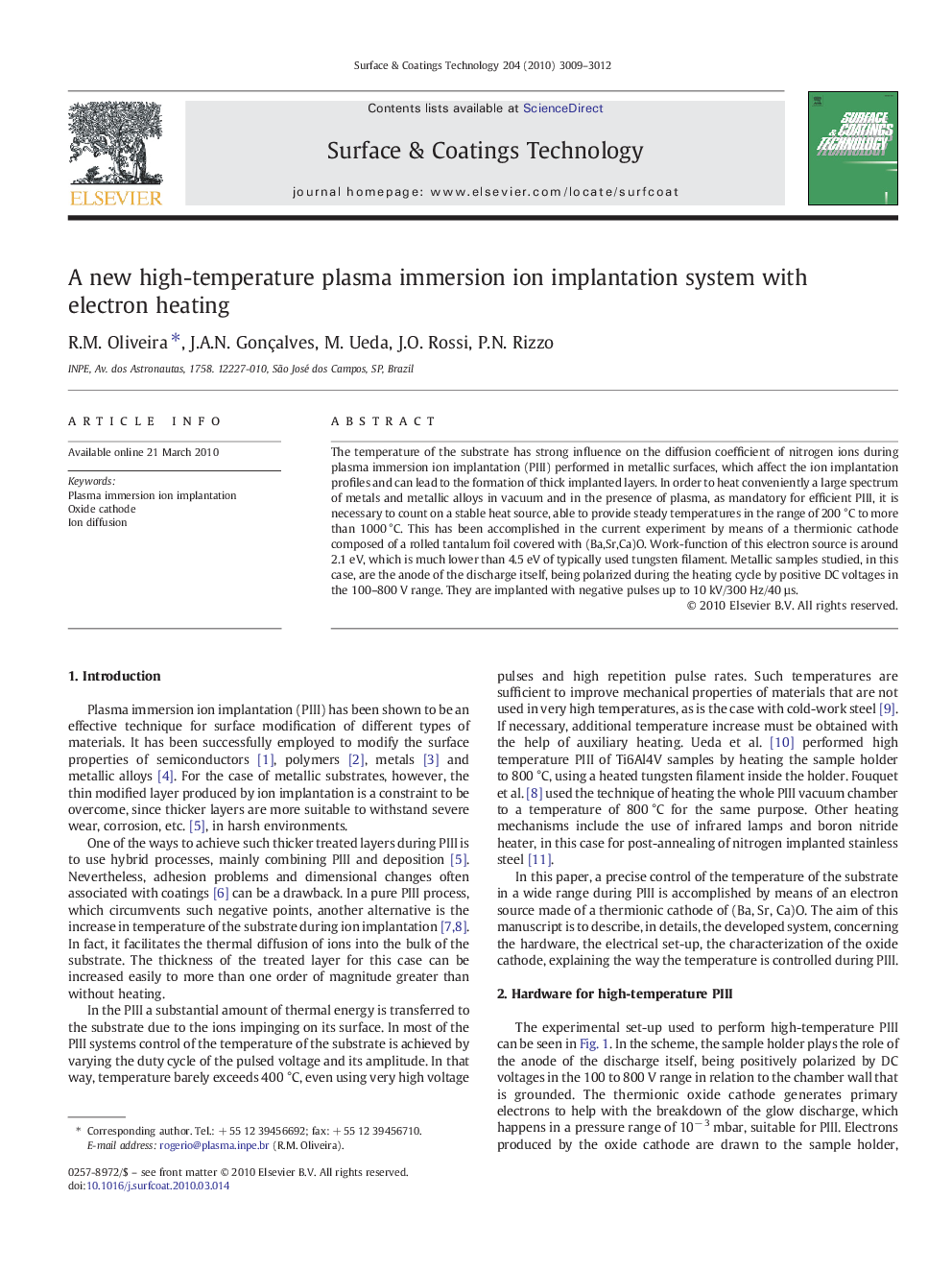| Article ID | Journal | Published Year | Pages | File Type |
|---|---|---|---|---|
| 1659324 | Surface and Coatings Technology | 2010 | 4 Pages |
The temperature of the substrate has strong influence on the diffusion coefficient of nitrogen ions during plasma immersion ion implantation (PIII) performed in metallic surfaces, which affect the ion implantation profiles and can lead to the formation of thick implanted layers. In order to heat conveniently a large spectrum of metals and metallic alloys in vacuum and in the presence of plasma, as mandatory for efficient PIII, it is necessary to count on a stable heat source, able to provide steady temperatures in the range of 200 °C to more than 1000 °C. This has been accomplished in the current experiment by means of a thermionic cathode composed of a rolled tantalum foil covered with (Ba,Sr,Ca)O. Work-function of this electron source is around 2.1 eV, which is much lower than 4.5 eV of typically used tungsten filament. Metallic samples studied, in this case, are the anode of the discharge itself, being polarized during the heating cycle by positive DC voltages in the 100–800 V range. They are implanted with negative pulses up to 10 kV/300 Hz/40 µs.
